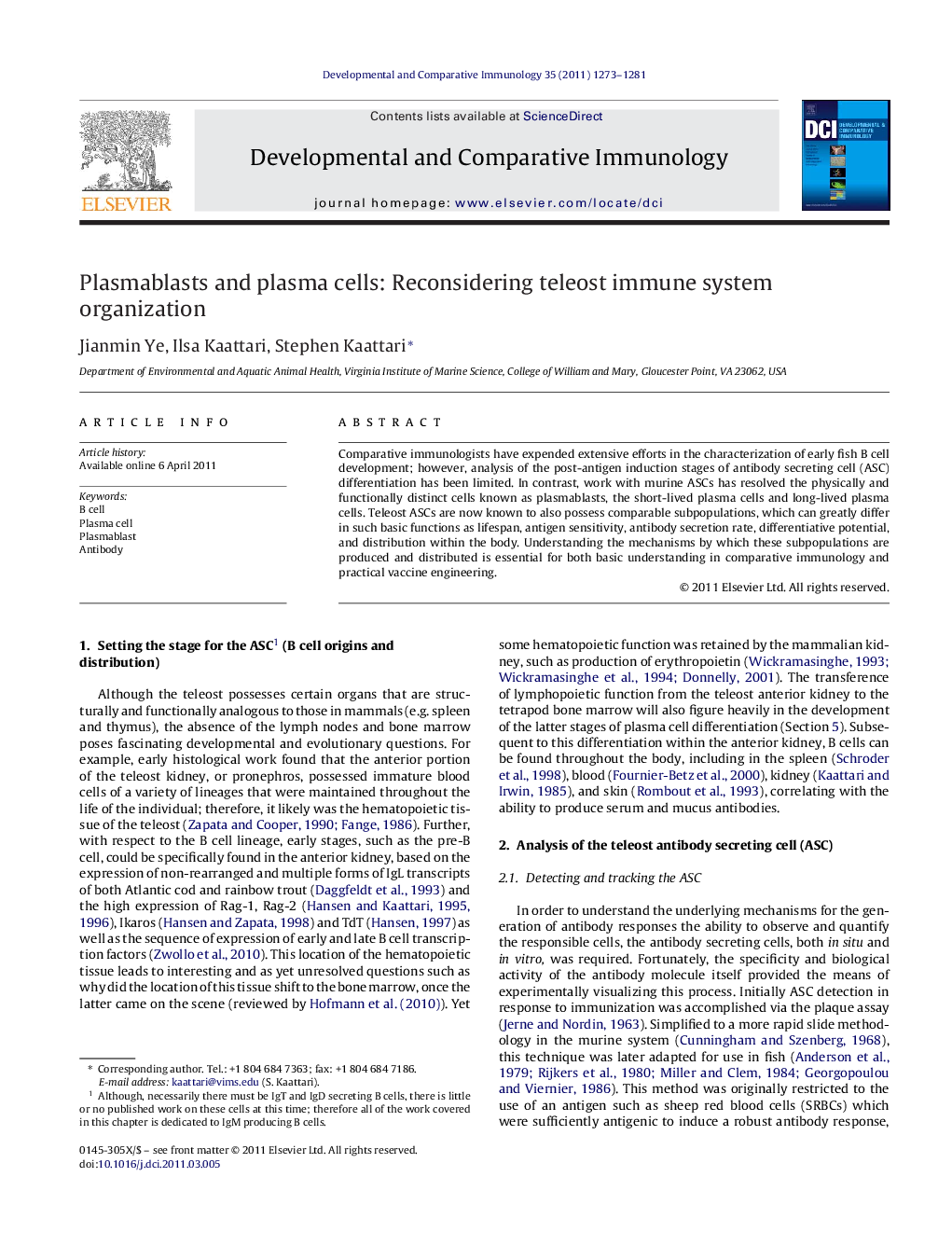| Article ID | Journal | Published Year | Pages | File Type |
|---|---|---|---|---|
| 2429677 | Developmental & Comparative Immunology | 2011 | 9 Pages |
Comparative immunologists have expended extensive efforts in the characterization of early fish B cell development; however, analysis of the post-antigen induction stages of antibody secreting cell (ASC) differentiation has been limited. In contrast, work with murine ASCs has resolved the physically and functionally distinct cells known as plasmablasts, the short-lived plasma cells and long-lived plasma cells. Teleost ASCs are now known to also possess comparable subpopulations, which can greatly differ in such basic functions as lifespan, antigen sensitivity, antibody secretion rate, differentiative potential, and distribution within the body. Understanding the mechanisms by which these subpopulations are produced and distributed is essential for both basic understanding in comparative immunology and practical vaccine engineering.
